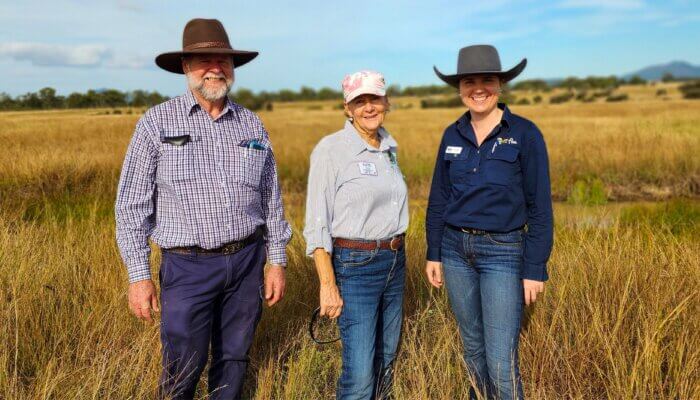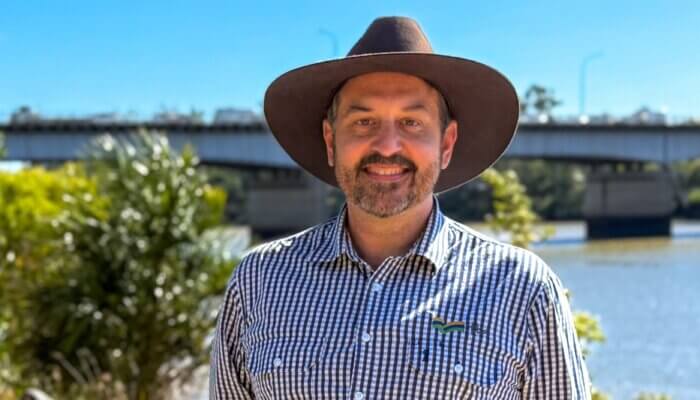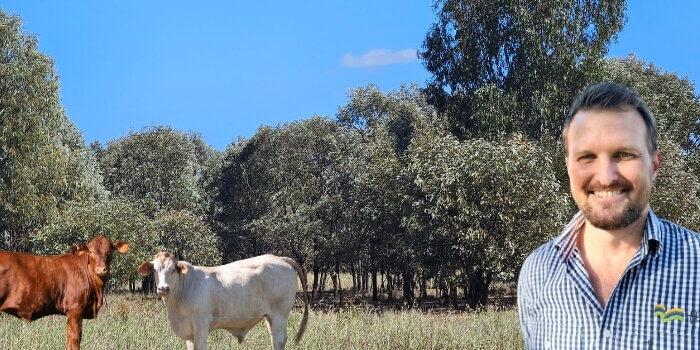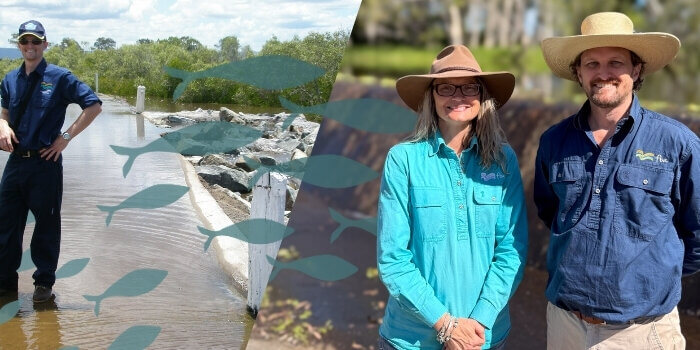Resources library
Resources
Pasture rundown case study
Addressing pasture rundown Tailored support makes legume trials possible

The Christies produce organically certified beef, and want to use sustainable and environmentally friendly practices while ensuring their enterprise is financially viable. They are committed to keeping abreast of industry improvements and Brett attended a Pasture Rundown workshop hosted by Capricornia Catchments in October 2014 before completing Grazing Best Management Practices (Grazing BMP) in September 2015.
01/01/2016
Legume trials
Soil tests and tailored support help provide pasture rundown solutions
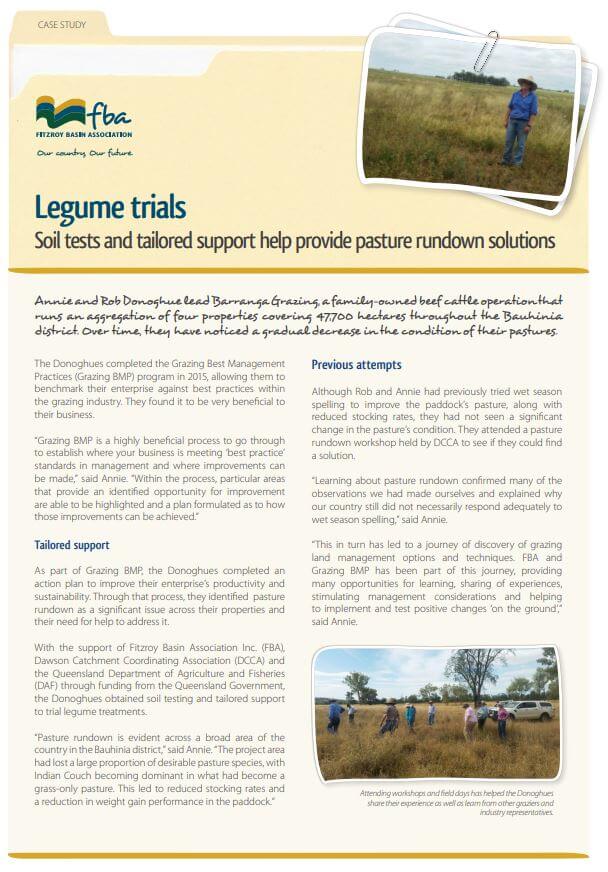
Annie and Rob Donoghue lead Barranga Grazing, a family-owned beef cattle operation that runs an aggregation of four properties covering 47,700 hectares throughout the Bauhinia district. Over time, they have noticed a gradual decrease in the condition of their pastures.
01/01/2016
Machinery innovation case study
Wandoan hay grower builds novel solution to achieve zero till goals
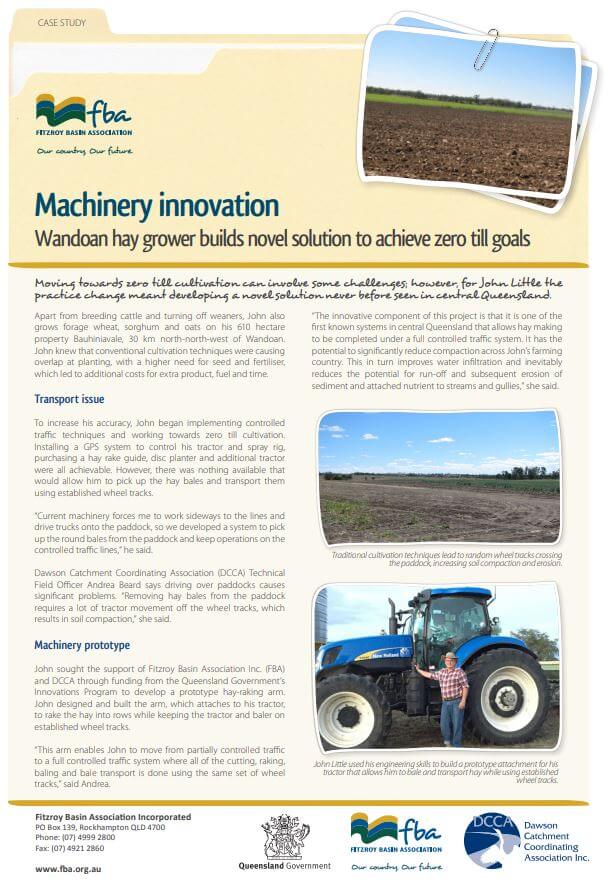
Moving towards zero till cultivation can involve some challenges; however, for John Little the practice change meant developing a novel solution never before seen in central Queensland.
01/01/2016
Flooding disaster leads to property re-design and resilience
Flooding disaster leads to property re-design and resilience

In the aftermath of ex-tropical cyclone Oswald, it would have been easy for husband and wife team Dave and Leonie Paish to be overwhelmed by the rebuilding work needed to restore their dairy operations at Velvet Waters.
07/07/2015
Building Resilience – Cyclone Flood Recovery
Building Resilience - Ex-tropical Cyclone Oswald Flood Recovery
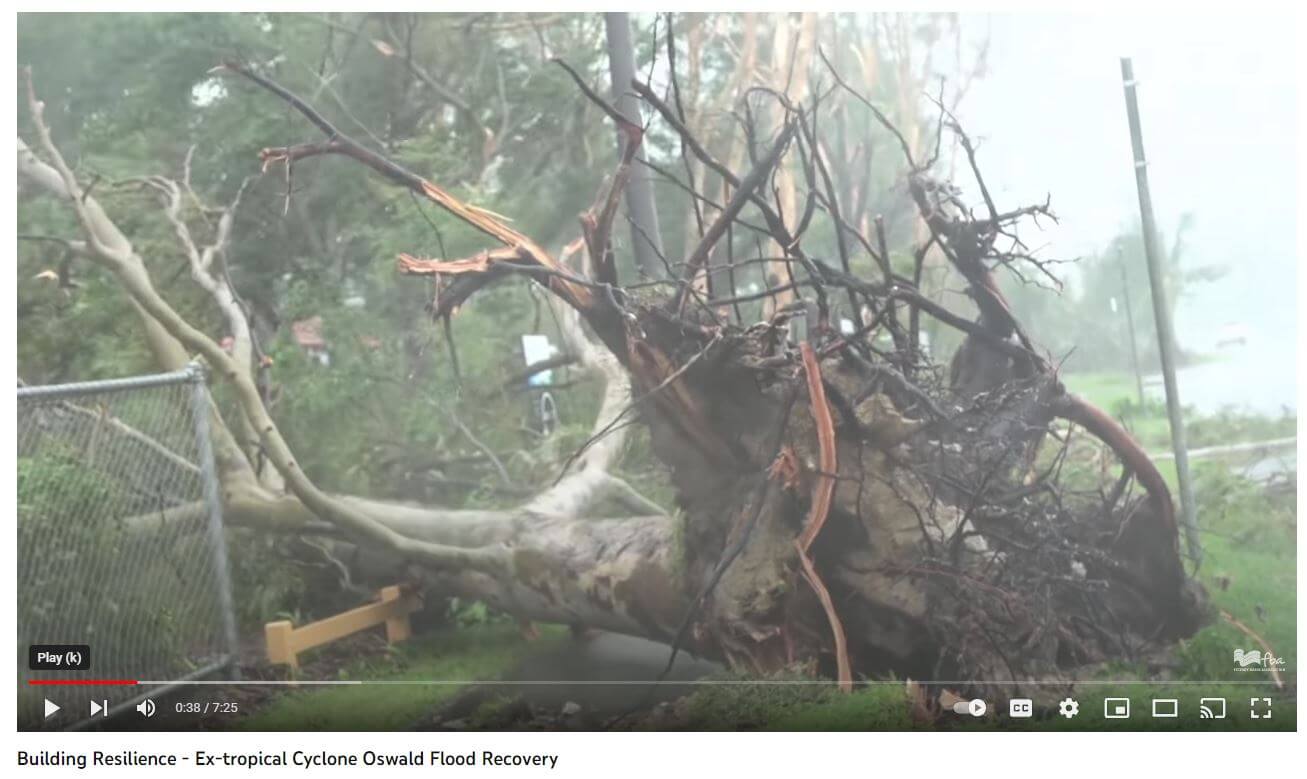
In January 2013, excessive rain from Ex-Tropical Cyclone Oswald—800mm over 20 hours—triggered massive flooding in areas, higher than previously seen. The rain event caused major structural damage to fencing and water infrastructure, as well as land degradation through erosion. Recovery work was completed through funding from the Queensland Government's Natural Disaster Relief and Recovery Arrangements: Ex-Tropical Cyclone Oswald On-farm Productivity and Riparian Restoration Program. FBA and our local delivery partners FRCC and DCCA, worked with landholders in the worst affected areas to repair the damage. On-ground restoration activities included streambank stabilisation and riparian restoration; gully stabilisation and soil conservation; and farm infrastructure restoration. The program also supported and promoted on-farm productivity, and enhanced local landscape, waterway and ecosystem capacity, and resilience to manage the impacts of future events.
02/07/2015
Gully Stabilisation & Soil Conservation Case Study
Gully Stabilisation & Soil Conservation Case Study
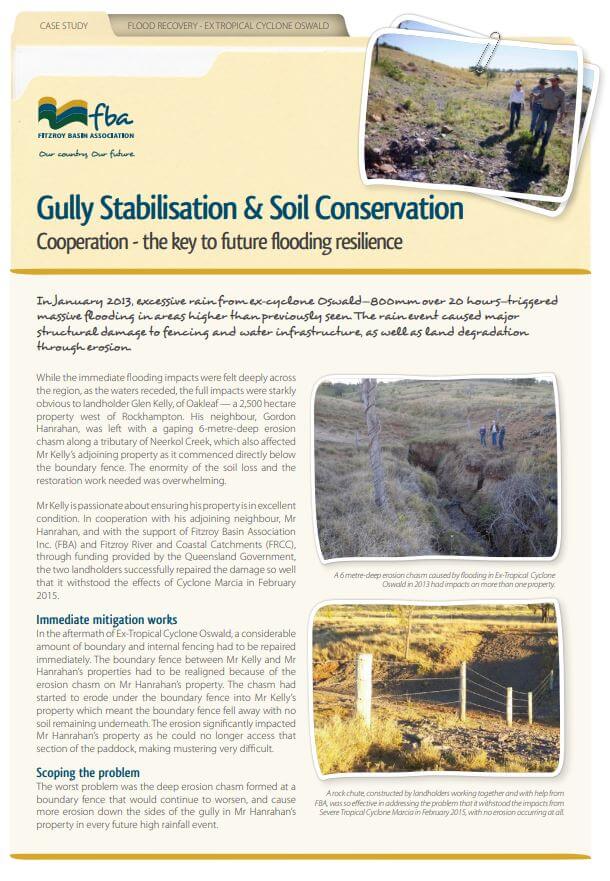
In January 2013, excessive rain from ex-cyclone Oswald—800mm over 20 hours—triggered massive flooding in areas higher than previously seen. The rain event caused major structural damage to fencing and water infrastructure, as well as land degradation through erosion.
28/05/2015
Cyclone Marcia damage to grazing and farming land
Cyclone Marcia damage to grazing and farming land

In February 2015, Category 5 - Cyclone Marcia crossed the coast north of Yeppoon. In it's wake a trail of destruction was left in the Fitzroy Basin, particularly to those in the farming and grazing community.
03/03/2015
From the beach to the bush: A young person’s perspective on caring for the environment
From the beach to the bush: A young person's perspective on caring for the environment
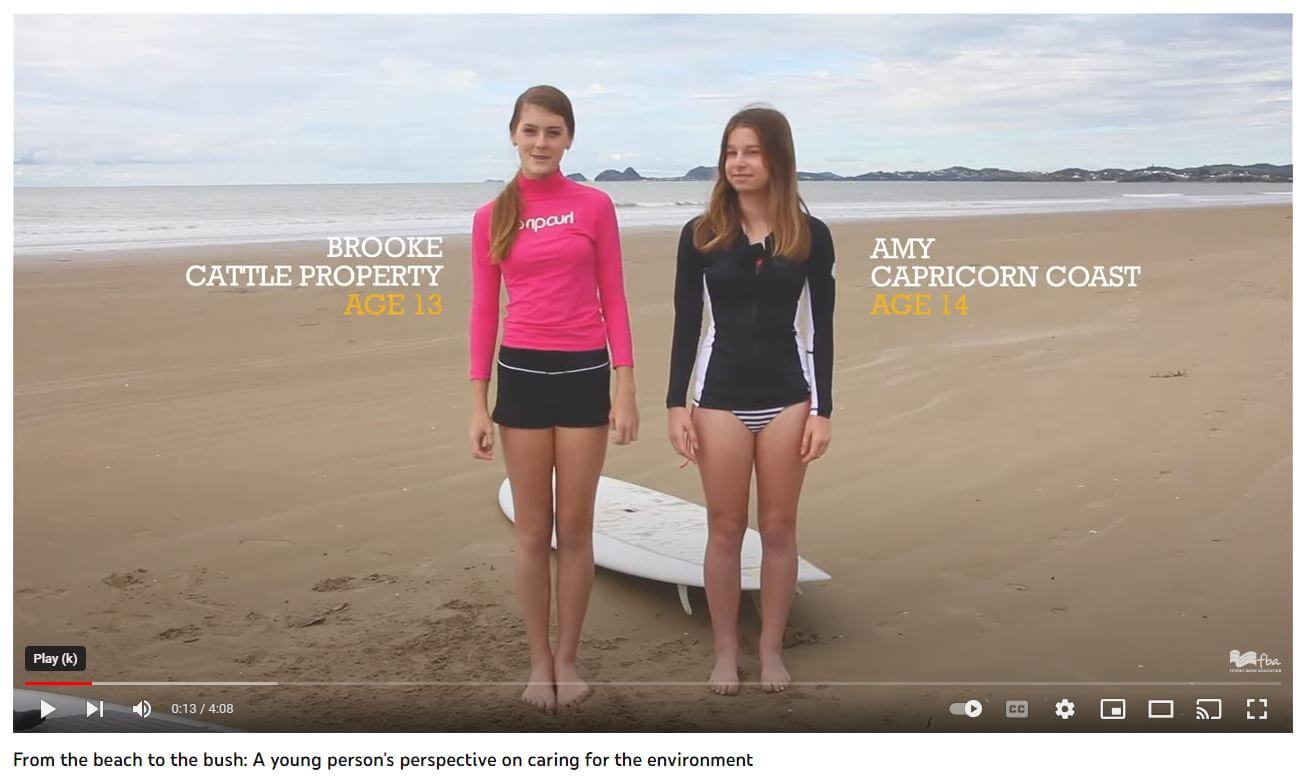
Brooke, 13, lives on a cattle property in Central Queensland, while Amy, 14, lives at the beach. Completely opposite lifestyles and upbringings yet the girls discovered they are very similar after spending a day in each other’s shoes. Brooke visited Amy at the beach and learnt to paddle board and later that day Amy visited Brooke's family property to spend time with the cattle, grooming the horse and collecting the chook eggs. Both girls care about the environment and our future and share their thoughts. There's something about witnessing the passion of the next generation and their drive to protect the environment that inspires each of us to do more, and think more about what can be done to protect it for future generations... Together we can protect our assets, support our growth and plan for our future. Visit CQSS2030.com.au for more information and to get involved!
12/10/2014
Better beef businesses with Grazing BMP
Better beef businesses with Grazing BMP

Robert Sherry and his wife Jane run Wahroonga, a 10,000 hectare cattle property in the Clarke Creek district approximately 200 kilometres north-west of Rockhampton. Wahroonga was the 100th grazing enterprise to complete the Grazing Best Management Practices (Grazing BMP) program. The voluntary, self-paced and self-assessed program helped him focus on the areas where he can improve his business and helps the industry benchmark its success. Robert believes Grazing BMP is a positive thing for the beef industry, and is encouraging all beef producers to complete the program, as it has made a big difference to his operations. Grazing BMP is a joint initiative of Fitzroy Basin Association Inc. (FBA), AgForce, the Queensland Department of Agriculture, Fisheries and Forestry (DAFF) and North Queensland Dry Tropics and is delivered with significant investment from the Australian and Queensland Governments.
20/05/2014





